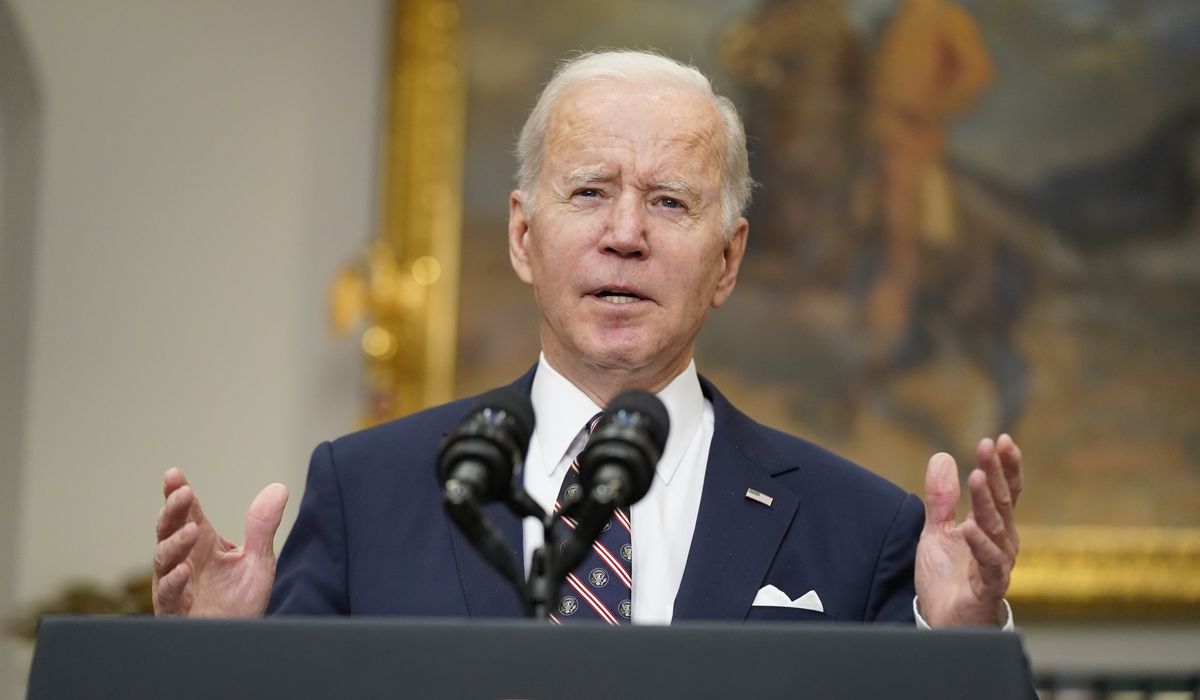

What a difference a decade makes.
President Biden, an infamous dissenter on the 2011 raid that killed al Qaeda leader Osama bin Laden, signed off on an equally risky and remarkably similar mission in northwest Syria on Wednesday that resulted in the death of Islamic State head Abu Ibrahim al-Hashimi al-Qurayshi.
Both saw U.S. special forces raid a compound in a largely residential area, encounter women and children essentially being used as human shields, rely heavily on local intelligence assets for information on the site and have to destroy a disabled military helicopter at the end of each mission.
For Mr. Biden, the death of al-Qurayshi is a desperately needed political win amid a string of domestic crises, from skyrocketing inflation to a resurgent COVID-19 pandemic and unchecked illegal immigration at the southern border.
It also temporarily takes some of Washington’s foreign policy focus from the standoff along the Russia-Ukraine border, as the White House faces growing criticism for its handling of the crisis and its apparent willingness to negotiate with the Kremlin.
But Wednesday’s raid — which U.S. officials say was in planning for more than a month — also is sure to raise deeper questions about whether Mr. Biden‘s ill-fated advice in 2011 and the subsequent political blowback have affected his decision-making.
Mr. Biden faced withering criticism for urging then-President Barack Obama to hold off on the bin Laden raid, saying he believed it was best to conduct more reconnaissance before sending in U.S. troops into an extremely dangerous situation.
“I’m the last person in the room. And again, this is a place where I’ve got to reserve space, in my view, for the president,” Mr. Biden told CNN during its recent “President in Waiting” documentary. “There was one option that was remaining. You could have done one more very low flight … spying down on the site to determine whether this was bin Laden.”
“I said, ‘Mr. President … I think you should wait and do one more pass,’ knowing that if you did a lower pass they might observe it and [bin Laden] would flee,” Mr. Biden said, going on to praise Mr. Obama for disregarding his advice.
“It took real courage to make that decision,” he said.
Indeed, Mr. Obama approved the mission on May 2, 2011, over the objection of his vice president. The dissenting stance has haunted Mr. Biden ever since. It was one of the decisions that led former Defense Secretary Robert Gates, who served as the Obama administration’s first Pentagon chief, to eviscerate Mr. Biden‘s foreign policy wisdom.
“I think he has been wrong on nearly every major foreign policy and national security issue over the past four decades,” Mr. Gates wrote in his 2014 book, “Duty: Memoirs of a Secretary at War.”
Mr. Biden also faced heat from then-President Donald Trump during the 2020 election, who used the issue to cast doubt on whether Mr. Biden could be trusted on issues of counterterrorism.
“If it were up to Joe, bin Laden … would still be alive,” Mr. Trump tweeted in September 2020.
The value and notoriety of the two targets in question, bin Laden and al-Qurayshi, varied greatly.
Al-Qurayshi took over as the de facto head of the global ISIS network in 2019. He had nowhere near the household-name status that bin Laden had earned during his years as the leader of an anti-U.S. jihadist movement across the Middle East.
But the military missions that resulted in their deaths share a host of similarities. Both terrorists were holed up in compounds located in residential neighborhoods, al-Qurayshi in Syria‘s Idlib province and bin Laden in Abbottabad, Pakistan. Both had their families with them in their well-protected compounds.
Neither left their residence, communicating with their extremist deputies through other means. Officials said al-Qurayshi often gave orders via courier.
In both instances, the commander in chief — Mr. Obama in 2011, Mr. Biden on Wednesday — opted for a special forces ground operation rather than an airstrike, putting U.S. troops at more risk but reducing the chances of civilian casualties and collateral damage.
U.S. helicopters also encountered problems during both missions. In Abbottabad, Pakistan, in 2011, a Black Hawk crashed as it arrived at the scene. In Syria on Wednesday, a helicopter suffered mechanical failures, officials said. Both were destroyed as U.S. personnel left the scene.
Despite the questions facing Mr. Biden, he struck a tough tone Thursday morning in remarks at the White House, using the mission to send a message to other terrorists around the world.
“We will come after you and find you,” he said.
